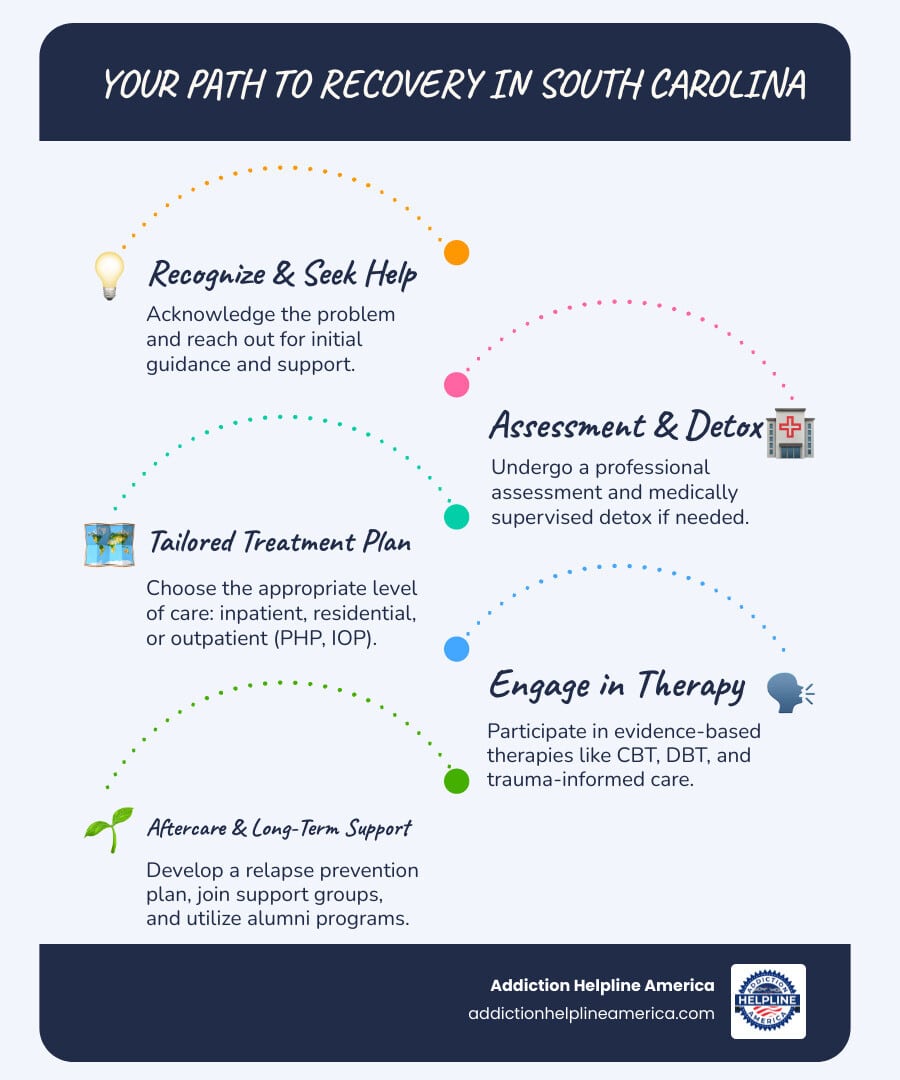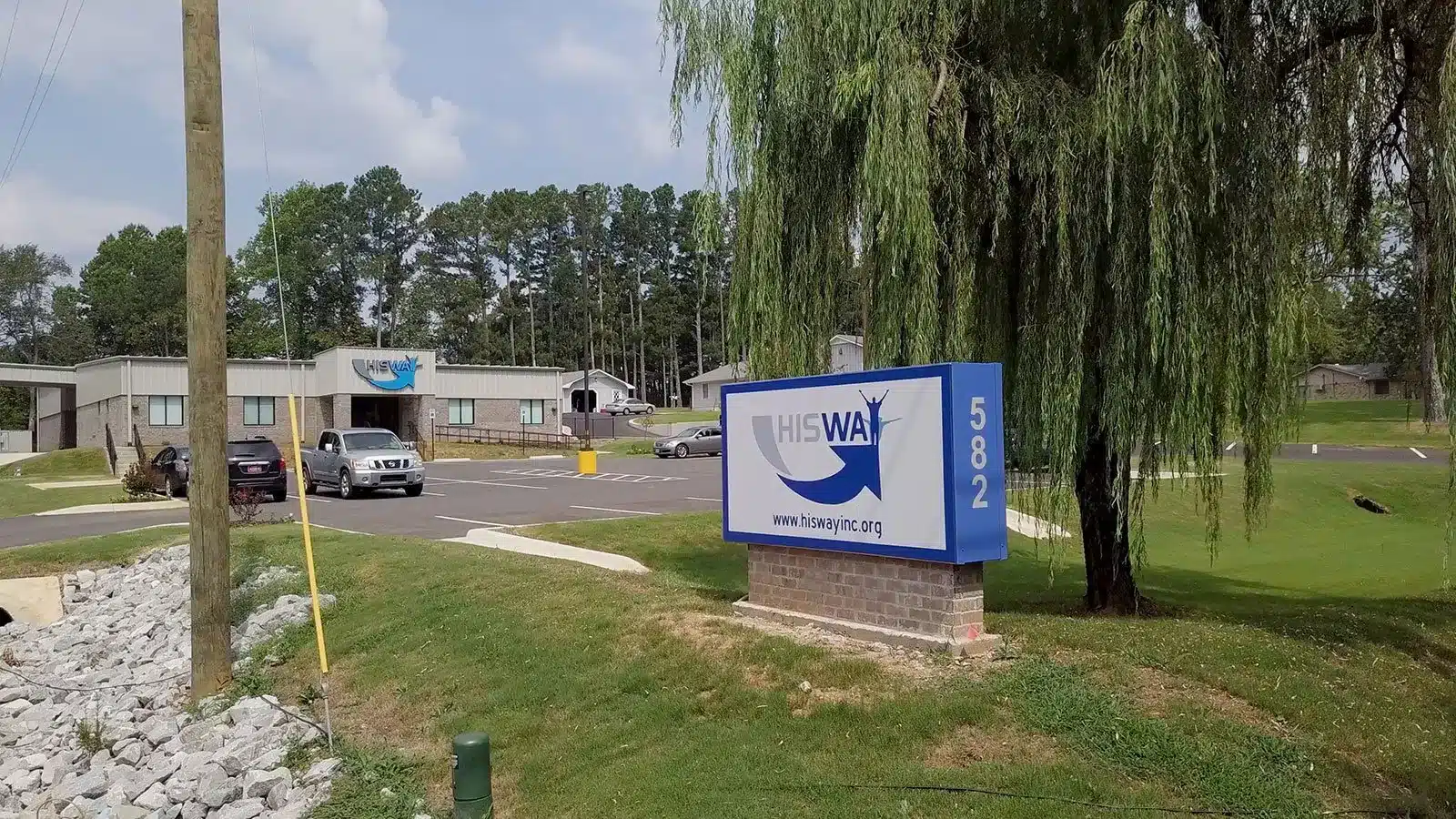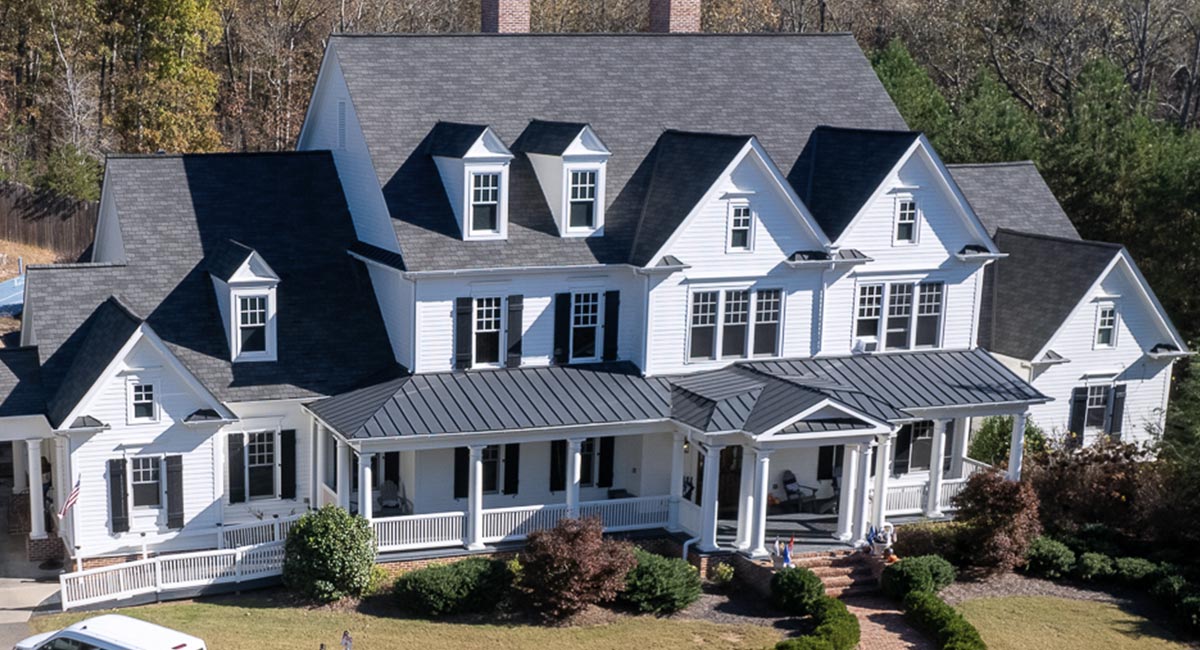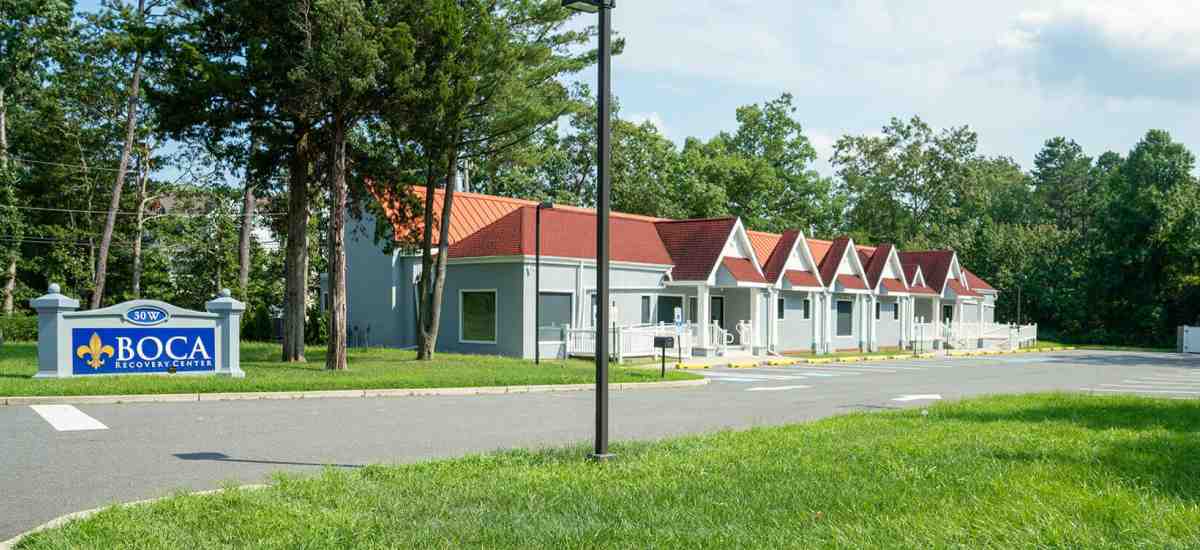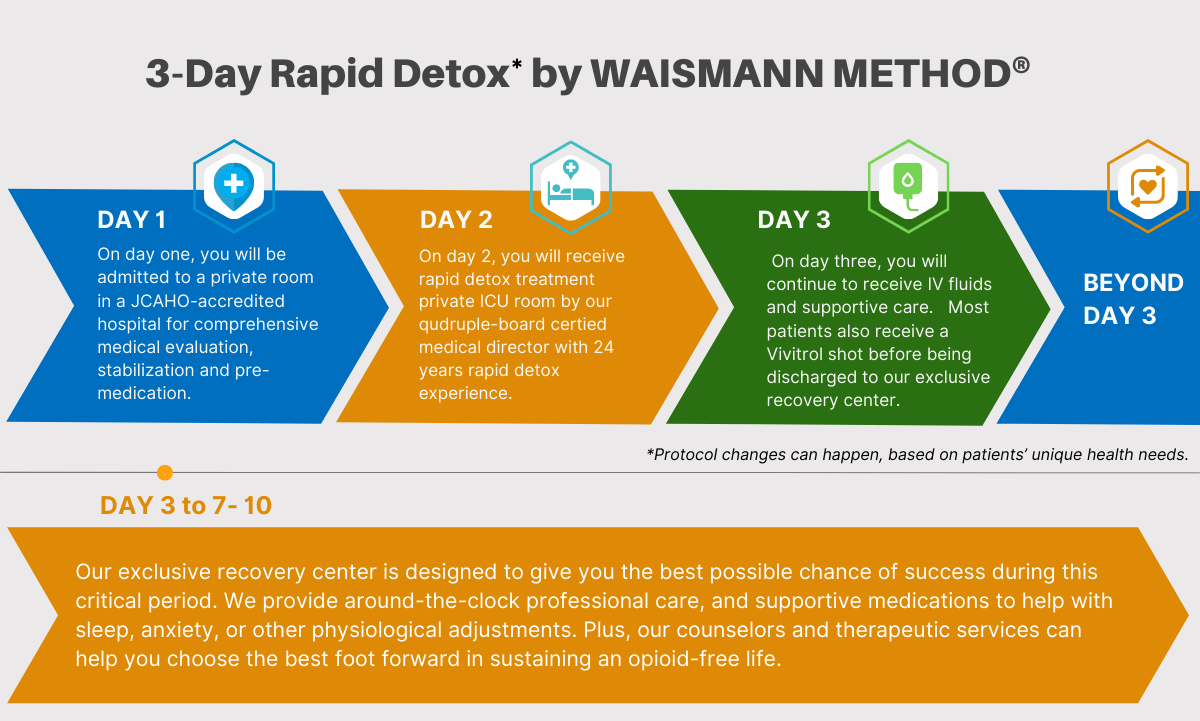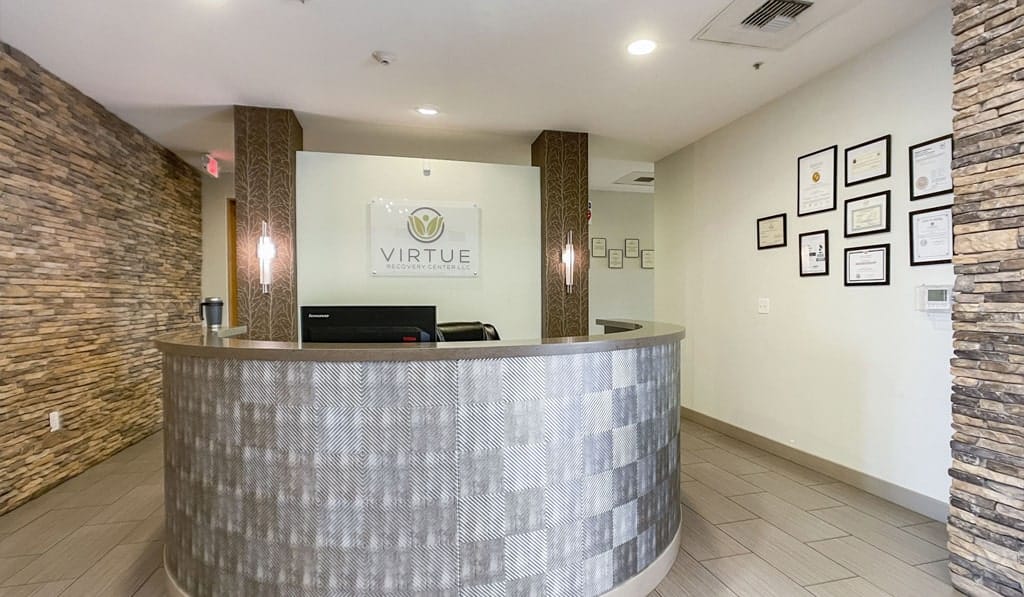
Understanding Your Options: What a 14-Day Rehab Program Offers
A 14 day rehab program is a short-term, intensive residential treatment for substance use disorders. It provides immediate, structured care in a safe environment where you can detox under medical supervision, begin therapy, and build a foundation for long-term recovery.
Key Facts About 14-Day Rehab Programs:
- Duration: 2 weeks of inpatient residential care.
- Core Components: Medical detox, individual and group therapy, and aftercare planning.
- Best For: Individuals in early-stage addiction, those with time constraints, or as a step toward longer-term treatment.
- Cost Range: $5,000 to $15,000, though insurance may cover many expenses.
- Success Factor: Most effective when followed by continued outpatient care and support.
These programs are not a cure but offer a critical jumpstart to recovery. They are valuable for those who need immediate intervention but cannot commit to 28, 60, or 90-day programs. The structured environment removes you from daily triggers and provides 24/7 medical support during withdrawal and stabilization. With drug overdoses claiming over 100,306 American lives in a recent 12-month period, short-term rehab offers accessible, intensive care for those who might otherwise receive no treatment.
During these two weeks, you will undergo a comprehensive assessment and medically supervised detox. You’ll participate in daily therapy, including evidence-based approaches like Cognitive Behavioral Therapy (CBT) and group counseling. The final days focus on discharge planning and connecting you with aftercare resources.
While a 14 day rehab provides focused treatment, it’s important to understand its limitations. Research shows that longer treatment durations (at least 90 days) are associated with better outcomes. A two-week stay may not be enough time to address deep-rooted issues, but it serves as an effective first step for those with mild to moderate addiction or people who cannot take extended leave from work or family.
At Addiction Helpline America, we help individuals and families find the right addiction treatment, including quality 14 day rehab programs that match their needs and insurance. We’re here to support you on your recovery journey.

14 day rehab terms at a glance:
Understanding the 14-Day Rehab Model
A 14 day rehab program is an intensive, focused intervention that allows you to begin healing without putting your life on hold for an extended period. As an inpatient, residential option, you’ll live at the facility for two weeks, removed from the triggers and stressors of your everyday environment. This provides a safe space to start healing with professional support.
The structure is intentional, with each day planned to maximize your recovery. This short-term intensive care focuses on rapid stabilization, helping you become physically and mentally stable. These programs are designed for those who need immediate help but have work, family, or financial constraints, or for individuals in the early stages of addiction. For more context, see our guide on Drug and Substance Abuse Treatment.
Primary Goals of a Two-Week Program
A 14 day rehab program is packed with purpose, aiming to build a foundation for long-term sobriety. The primary goals include:
- Medical stabilization: This is the first priority. Medical professionals monitor you 24/7, managing withdrawal symptoms with medications to ensure you are safe and comfortable as your body begins to heal.
- Psychological assessment: Staff conduct a thorough assessment to understand the underlying drivers of your substance use, such as trauma or co-occurring mental health challenges. This helps create a holistic treatment plan, which is especially important for those with alcohol dependency, as detailed in our Understanding Alcohol Addiction Guide.
- Learning coping skills: You’ll learn practical tools to replace substance use as a response to stress or difficult emotions. These include mindfulness practices and strategies for managing cravings.
- Relapse prevention basics: You will learn to identify personal triggers and develop specific strategies to handle them without returning to substance use.
- Aftercare planning: From day one, your team works with you to create a detailed plan for what comes next, whether it’s an outpatient program, support groups, or a sober living environment.
What Addictions Are Treated?
A 14 day rehab can address a wide range of substance use disorders, though it’s best suited for certain situations. These programs commonly treat:
- Alcohol Use Disorder (AUD): Especially for mild to moderate dependence, with medical detox to manage potentially dangerous withdrawal.
- Opioid addiction: For substances like prescription painkillers or heroin, often integrating Medication-Assisted Treatment (MAT) to ease withdrawal and cravings.
- Prescription drug abuse: For benzodiazepines or stimulants, requiring careful medical supervision for a safe detox.
- Stimulant addictions: For cocaine and methamphetamine, where the 24/7 support and behavioral therapies help manage intense cravings and mood changes.
- Co-occurring disorders: Many programs offer an integrated approach, treating both addiction and mental health conditions like depression or anxiety simultaneously. Our guide on Addiction and Mental Health explores this connection.
While individuals with severe, long-term addictions may need longer treatment, a 14 day rehab can be a powerful first step toward stabilization.
A Typical Day in a 14-Day Program
Life in a 14 day rehab follows a structured rhythm to create an environment where you can focus entirely on recovery.
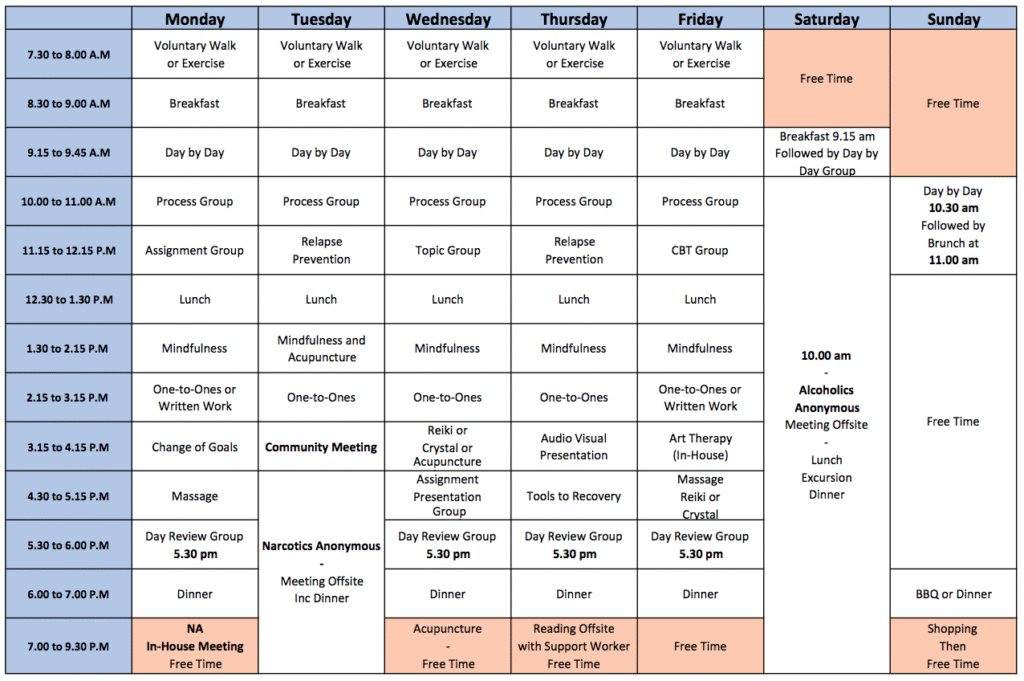
- Morning: Your day typically starts around 7:00 AM with activities like meditation or journaling, followed by breakfast. From 9:00 AM to noon, you’ll attend individual and group therapy sessions.
- Afternoon: After lunch, the afternoon is for additional therapeutic activities, such as educational workshops or specialized therapies like art or music therapy.
- Evening: After dinner, evenings often include 12-step support group meetings, guest speakers, or recreational activities that build community and teach sober social skills.
Lights out is usually around 9:00 PM, as adequate rest is crucial for healing. This intensive structure, with at least three hours of therapy daily, provides the predictability and safety needed in early recovery.
Core Therapies and Medical Supervision in a 14 Day Rehab
When you enter a 14 day rehab program, you are entering a treatment environment where every session and medical check is part of an individualized plan. The beauty of an Inpatient Drug Rehab setting is the constant access to medical and psychological professionals who protect your physical and mental well-being.
Key Therapeutic Approaches
Therapy provides your toolkit for recovery. During your stay, you’ll be introduced to several powerful, evidence-based approaches:
- Cognitive-Behavioral Therapy (CBT): This practical therapy helps you identify, challenge, and replace the negative thought patterns that lead to substance use.
- Dialectical Behavior Therapy (DBT): DBT teaches specific skills for managing overwhelming emotions, tolerating distress, and improving relationships.
- Motivational Interviewing (MI): This collaborative approach helps you explore and strengthen your own personal motivations for change, rather than being lectured on why you should get sober.
- Group therapy: Sharing experiences with peers reduces the isolation of addiction and builds a supportive community. You’ll gain insights and realize you are not alone.
- Individual counseling: One-on-one sessions provide a safe, confidential space to address personal issues like trauma or family dynamics that may contribute to your substance use.
- Family involvement: When appropriate, involving loved ones can help rebuild trust and create a supportive home environment for your return.
- 12-step programs: Many programs integrate principles from groups like Alcoholics Anonymous (AA) or Narcotics Anonymous (NA), providing a framework and community that extends beyond your stay. Learn more in our Treatment Options: 12 Step Program guide.
The Critical Role of Medical Detox and Supervision
Detox can be uncomfortable and even dangerous without professional help. This is why medical supervision during your 14 day rehab is essential.
From the moment you arrive, you are under 24/7 medical monitoring. Nurses and medical staff check your vital signs and manage symptoms, responding immediately to any complications. This continuous oversight is a key benefit of a medically supervised rehabilitation program.
Withdrawal management is handled by a team that knows exactly what to watch for. For substances like alcohol or opioids, withdrawal can be severe, and our medical teams are trained to intervene safely.
Medication-Assisted Treatment (MAT) may be used to significantly reduce withdrawal symptoms and cravings. These FDA-approved, non-addictive medications make the detox process more tolerable and increase your chances of success.
Your medical team—including physicians, nurses, and therapists—works together to keep you safe. Attempting to detox at home can be dangerous. The medical supervision in a 14 day rehab ensures this first step is handled professionally. Our Detox Programs Near Me guide can help you find medically supervised options.
Evaluating the Pros, Cons, and Outcomes of a 14-Day Program
Choosing the right treatment path requires understanding what a 14 day rehab can and cannot accomplish. It’s important to be realistic about the time commitment, cost, and intensity of treatment.
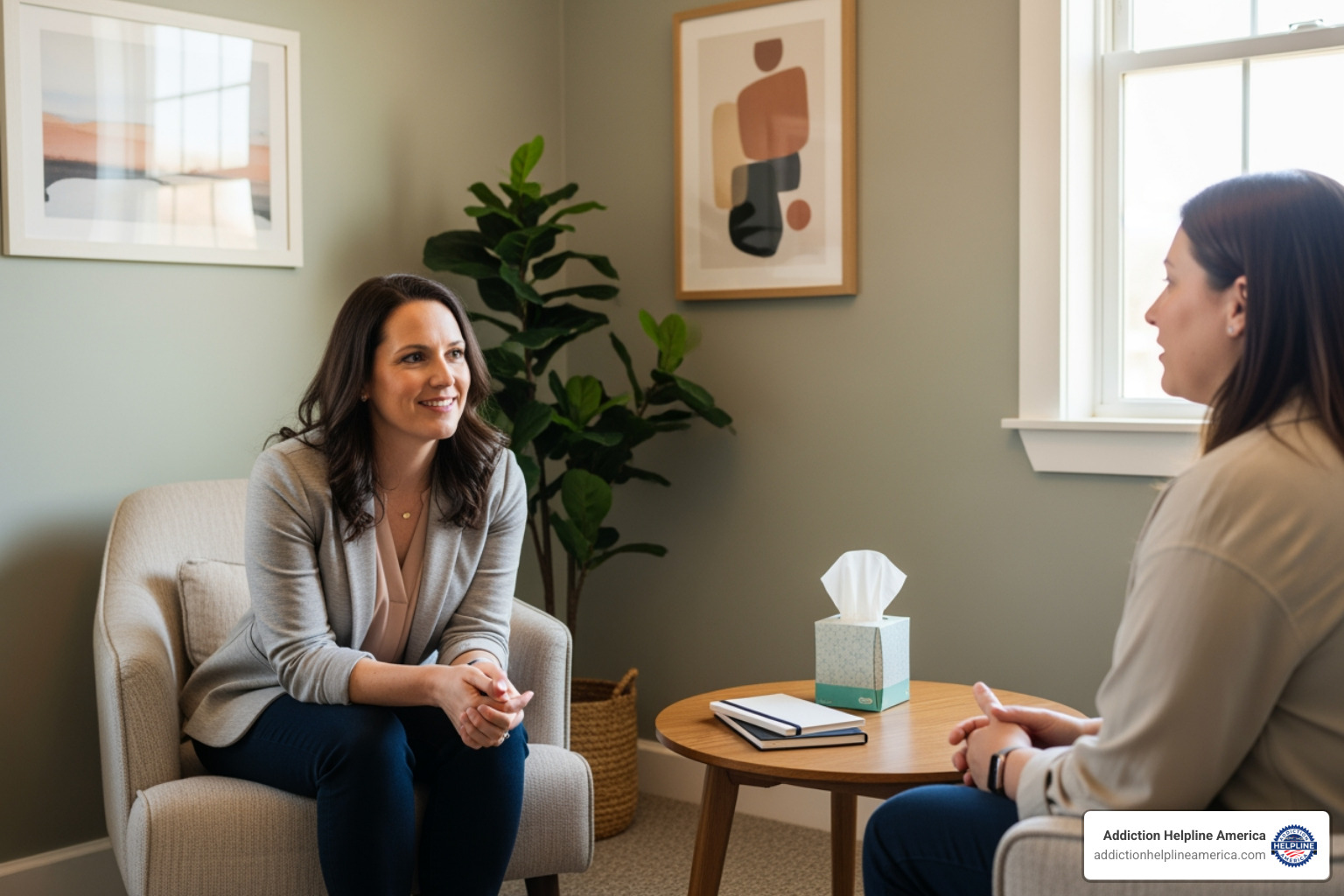
Advantages of a Short-Term Stay
Short-term programs are popular because they fit many people’s real-world circumstances.
- Less disruption to life: A two-week commitment is more manageable for those with significant work or family responsibilities.
- Lower cost: A 14 day rehab typically costs between $5,000 and $15,000, making it more accessible than longer programs. Insurance often provides better coverage for shorter stays.
- Intensive start to recovery: The focused, structured environment removes you from triggers and provides a boot camp for sobriety.
- Quick access to care: When someone is ready for help, many short-term programs can provide admission within days, which can be life-saving.
Limitations and Challenges of a 14-Day Rehab
It’s also important to acknowledge the limitations of a short-term program.
- Limited time for deep-seated issues: Two weeks is often not enough time to fully address complex issues like trauma or severe mental health conditions.
- Risk of feeling rushed: The pace can feel overwhelming, as you are detoxing, attending therapy, and planning for discharge all at once.
- Critical importance of aftercare: A 14 day rehab is not a standalone solution. Without a solid plan for continued care, the risk of relapse is high. For those who need more, our Long Term Rehab Near Me Guide is a useful resource.
- Not suitable for severe addiction: Individuals with a long history of heavy use or multiple relapses will likely need a longer program for lasting change.
Anticipated Outcomes and Success Rates
It’s best to set realistic expectations for a 14 day rehab. The program provides a foundation for sobriety through safe detox, stabilization, and an introduction to coping skills. It’s the essential first step, but just the beginning.
Addiction is a chronic disease, and relapse rates are between 40-60%, similar to other chronic illnesses like diabetes. Relapse is not a failure but a sign that the treatment plan may need adjustment. Research on patient-reported outcome measures for rehabilitation hospitals shows that success is heavily tied to the length of stay and continued engagement in treatment.
The key to success after a 14 day rehab is continued care. Individuals who transition to outpatient programs, attend support groups, and continue therapy have dramatically better outcomes. Your discharge plan should connect you to this ongoing support, which you can learn more about in our Substance Use Help Tips. A 14-day program can kick-start your journey, but only if you view it as the first step.
How to Find and Select the Right Program
Choosing the right 14 day rehab can feel overwhelming, but you don’t have to do it alone. Finding a facility that fits your unique needs is a critical step on your path to recovery.
Steps to Locate a 14-Day Rehab Facility
Start by gathering information from trusted sources. The Substance Abuse and Mental Health Services Administration (SAMHSA) offers a national treatment locator, and we’ve created our own Rehab Locator to help you find quality programs. Your doctor or therapist can also provide referrals based on your medical history.

Once you have a list of potential facilities, explore their websites for details on their treatment philosophy and staff qualifications. Read patient reviews to get a sense of daily life at the facility. When you’ve narrowed your options, call the admissions teams directly. Ask detailed questions about their program, medical protocols, and aftercare planning. This call can reveal a lot about the facility’s culture.
Consider the location as well. Some people prefer to stay close to home for family support, while others find that distance from triggers is more helpful. If you’re searching for a loved one, our guide on Helping A Loved One With Addiction offers additional guidance.
Key Considerations When Choosing a Program
When selecting a 14 day rehab, several factors deserve your attention. Use this list to guide your decision:
- Accreditation and Licensing: Verify that the facility is licensed by the state and accredited by a recognized body. This ensures it meets professional standards of care.
- Staff Qualifications: Ask about the credentials and experience of the medical and therapeutic staff. A strong team will be multidisciplinary.
- Treatment Philosophy: Ensure their approach aligns with your needs. Look for evidence-based therapies like CBT and DBT and a willingness to create an individualized plan.
- Aftercare Planning: This is critical for a short-term program. Ask how they will connect you with outpatient treatment, support groups, and other resources after you leave.
- Environment and Location: Consider whether a rural or urban setting would be more conducive to your healing.
- Cost and Insurance: Contact your insurance provider to understand your coverage. Ask the facility about all potential costs, and inquire about payment plans or financing if needed.
- Family Involvement: If family therapy is important to you, ensure the program offers it.
- Dual Diagnosis Treatment: If you have a co-occurring mental health disorder, confirm the facility provides integrated care for both conditions.
- Relapse Prevention: Ask about the specific tools and strategies they teach to help you handle cravings and triggers after treatment.
Asking these questions is smart. This is your recovery, and you deserve a program that serves your needs. Our Find a Rehab Center Guide provides more detailed information.
Frequently Asked Questions about 14-Day Rehab
Choosing a 14 day rehab program comes with many questions. Here are straightforward answers to some of the most common concerns.
Is a 14-day rehab program long enough to be effective?
Yes, a 14 day rehab can be an effective starting point, especially for those in the early stages of addiction or with milder dependencies. It provides a powerful intervention to complete medically supervised detox, learn foundational coping skills, and create a plan for ongoing recovery.
However, its success depends on what happens afterward. Research shows that individuals who engage in comprehensive aftercare—such as outpatient therapy and support groups—have significantly better long-term outcomes. For those with severe, long-term addiction or complex co-occurring disorders, a longer program is often recommended. A 14-day program is best viewed as a crucial first step, not a complete cure.
How much does a 14-day rehab program typically cost?
Costs for a 14 day rehab program generally range from $5,000 to $15,000, depending on the location, amenities, and services offered. Luxury facilities can cost more.
Fortunately, insurance can significantly reduce your out-of-pocket expenses. Most health insurance plans are required to cover addiction treatment. Your first step should be to verify your specific coverage with your provider or the facility’s admissions team. At Addiction Helpline America, we can help you understand your plan and any potential costs.
Many facilities also offer payment plans, financing options, or sliding scale fees to make treatment more accessible. While the cost may seem significant, it is an investment in your health that pales in comparison to the long-term costs of untreated addiction.
What happens after I complete a 14-day rehab program?
Completing a 14 day rehab is the beginning of your recovery journey, not the end. A detailed aftercare plan is essential for maintaining your progress.
Your aftercare plan, which is developed during your stay, will likely include several components. Most people transition to an outpatient program, such as an Intensive Outpatient Program (IOP), which provides continued therapy while you live at home. Continuing individual therapy and attending support groups like Alcoholics Anonymous (AA) or Narcotics Anonymous (NA) are also crucial for building community and accountability.
For some, a sober living home provides a structured, supportive environment to practice new skills. Continued medical oversight is also important if you are on Medication-Assisted Treatment or managing a co-occurring disorder. The key to long-term success is staying engaged in your recovery.
Take the First Step Towards Recovery
Reading this guide is a courageous first step. Whether for yourself or a loved one, reaching out for help is a sign of strength.
A 14 day rehab program may not be a magic cure, but it can be the powerful start you need to reclaim your life. It offers a focused opportunity to detox safely, learn foundational coping skills, and create a realistic plan for long-term sobriety. It’s a chance to pause the chaos and focus entirely on your healing in a supportive environment.
We know the decision can be overwhelming due to concerns about cost, time away, or effectiveness. A 14 day rehab is an accessible option that makes treatment possible right now—and immediate help is often what’s needed most.
You don’t have to figure this out alone. Addiction Helpline America provides free, confidential guidance to connect you with the right program for your unique needs and insurance coverage. We work with a vast network of facilities across every state and can help you find the right fit.
We can also guide you toward a full spectrum of care. Explore the different types of treatment programs available, from outpatient to longer residential stays. Recovery is not one-size-fits-all.
If you are ready to begin healing, we are here. Take that first step. Your future self will thank you for the courage you’re showing today. Let’s start this journey together.
Our helpline is 100%
free & confidential
If you or someone you care about is struggling with drug or alcohol addiction, we can help you explore your recovery options. Don’t face this challenge alone—seek support from us.
Programs
Resources
Will my insurance
cover addiction
treatment?
We're ready to help
Find the best
drug or alcohol treatment
center
Are you or a loved one struggling with addiction? Call today to speak to a treatment expert.


